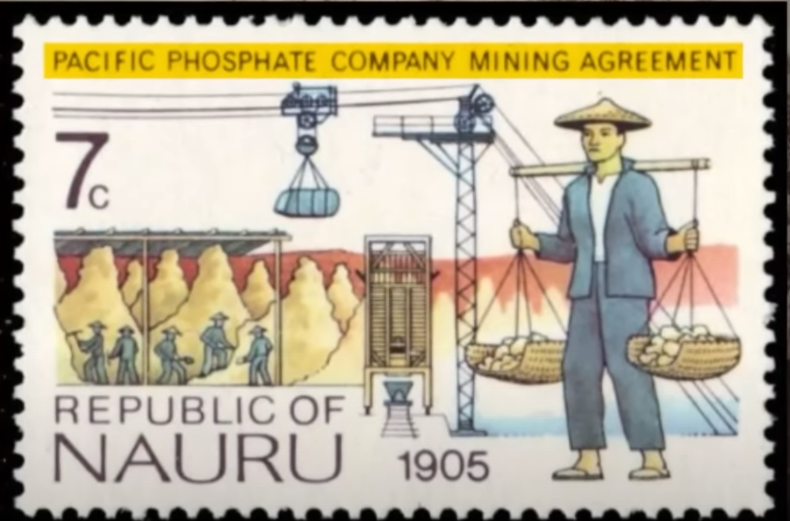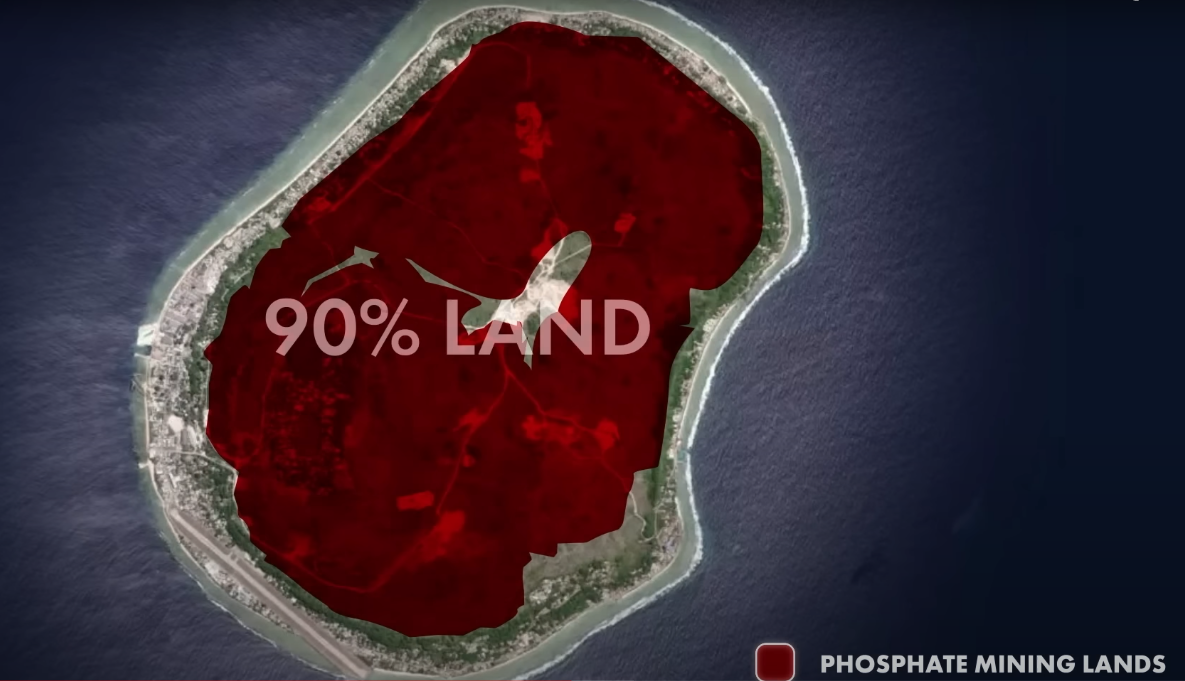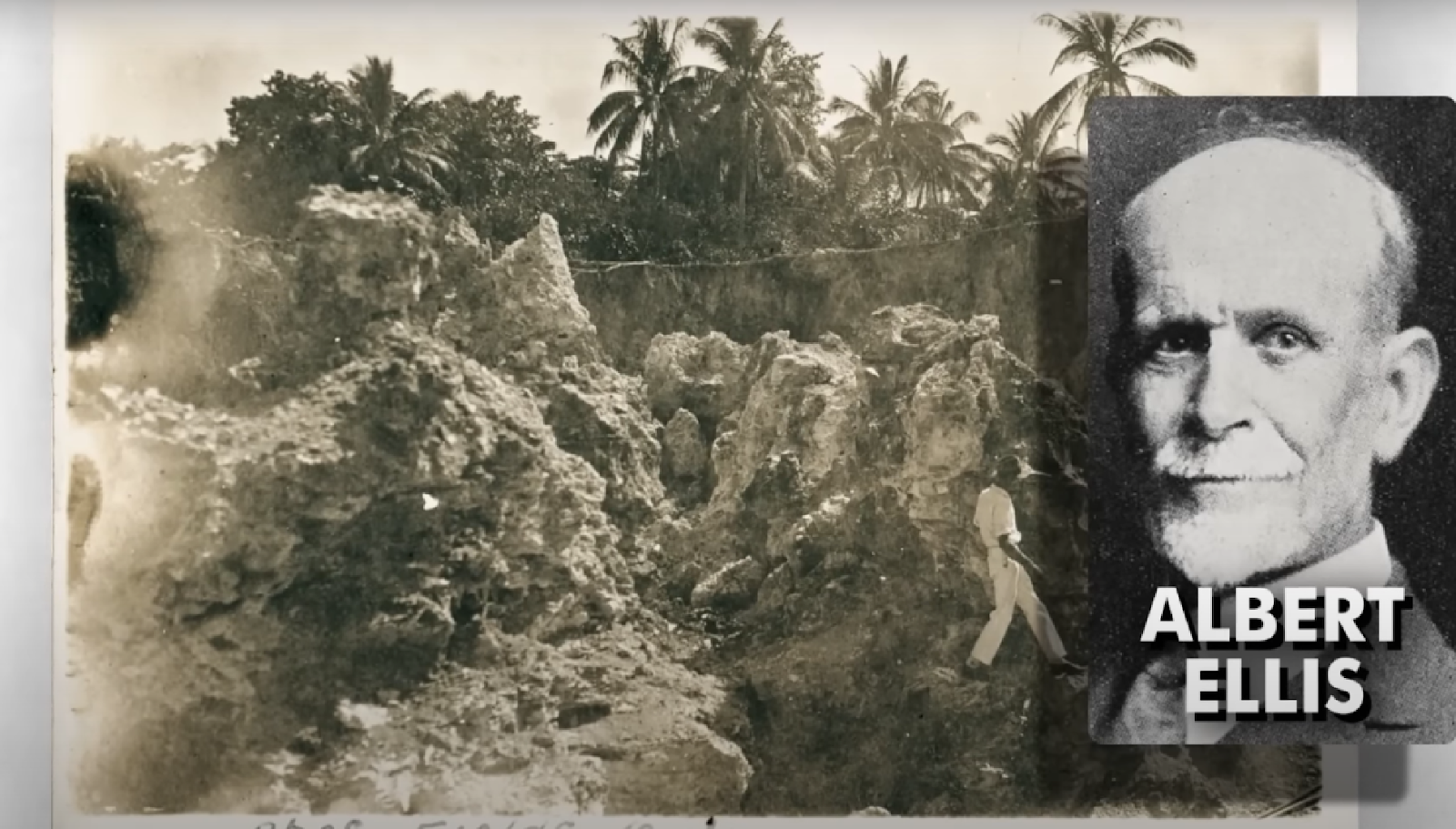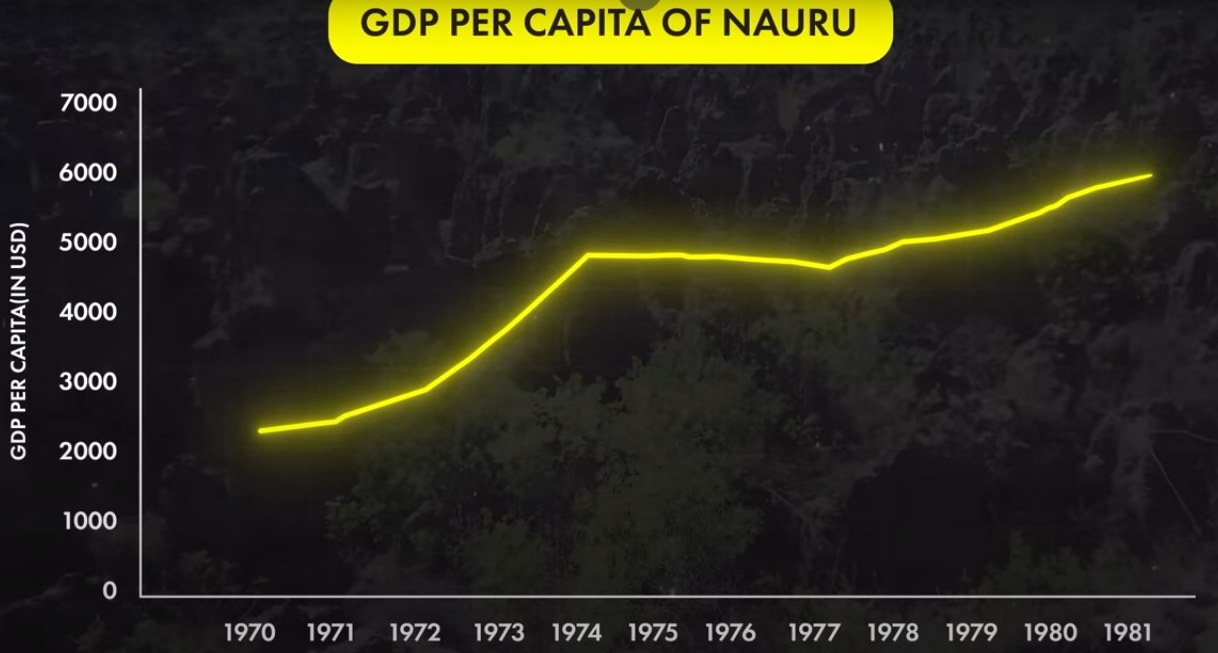These are the Top 10 Most Obese Countries. How did all these countries fall victim to obesity? Companies which do not care how healthy you are as long as they are making money off of you. The Most Obese Country In The World. This is the story of the fattest country in the world.
Hello, friends!
Can you guess which is the most obese country in the world? Which country has the largest population of obese people?
The first country you’d think of is America. But that’s the wrong answer. The correct answer is a small country in the Pacific Ocean, Nauru.
61% of the people residing here suffer from obesity. And almost 90% of the population is overweight. Can you imagine a country where 9 out of 10 people are overweight? How could this be?
There’s a dreadful story behind it. Of Crony Capitalism.
First of all, it is important to know the Difference between the words ‘overweight’ and ‘obese’ in this context. For this, we use a very common indicator BMI or the Body Mass Index. Calculating BMI is really simple. You can calculate your BMI.
Step 1: Check your height. If you know your height in terms of feet and inches, Convert it into meters, If it’s 5’8” it’ll be 1.72m.
Step 2: Check your weight in kilograms. Let’s suppose your weight is 74 kg.
Step 3: divide your weight by your height squared.
That will be 24.8, your BMI. Based on BMI, there is a very simplified criteria.

If your BMI is less than 18.5 you are underweight. If it is between 18.5 and 24.9 you have a normal, healthy weight. And if it is between 25 and 29.9, you will be in the category of overweight. And a BMI of 30 or above is the category for obesity. So basically, obese people are more overweight than those in the overweight category. If you fall in the Underweight, Overweight or Obese categories, It might be a warning sign for you. But if you are in the healthy category, it doesn’t mean that you should start rejoicing, Because BMI isn’t the only indicator of health. It’s possible that you’re in the healthy range and you look thin, But you might not be fit. Because to calculate fitness, several other indicators are used. Such as muscle strength, muscle endurance, Flexibility, stamina, At the same time, it is possible that if you are a muscular person, your muscle weight might put you into the overweight category based on BMI. But it wouldn’t mean that you are unhealthy. It’s possible to be healthy and overweight at the same time, As long as you are a muscular person. But generally, we can say that if you are in the obese category, This can definitely be a problem. Several research and studies show us that Suffering from obesity means that you are at a higher risk of other diseases. Such as Type II diabetes, hypertension, high blood pressure, heart disease, brain stroke, fatty liver disease, kidney disease, pregnancy problems, depression, and certain types of cancer. This is why, in 2013, the American Medical Association recognised obesity as a disease. Nauru’s case isn’t isolated. If you look at the list of the Top 10 Most Obese Country
You might not have heard the names of the countries on this list. There’s Nauru at #1 followed by Palau, Cook Islands, Marshall Islands, Tuvalu, Niue, Kiribati, Tonga, Samoa, and Micronesia. Do you know what these countries have in common? All of these countries are situated in the Pacific Ocean And are small island countries. If you see the photos and videos of these islands, you‘ll see how beautiful these places are. Perfect beaches, coral reefs, tropical forests, It’ll seem that any person living here must be super healthy and fit. They’ll have fresh coconuts right from the trees, And they’ll fish every day for their meals.
So how could these countries fall victim to obesity?
Come, let’s understand with the help of Nauru’s example. This is a tiny country. In fact, the third smallest country in the world. There’s only 1 island of about 21 km². Only 12,500 people live on this island. World’s smallest island nation. Once, this used to be a beautiful untouched island. In 1798, it was discovered by the rest of the world. When a British ship docked here. The captain of the ship, John Fearn, was so captivated by the beauty of this island that he named it the Pleasant Islands. The name of the British Ship was Hunter. And for the next 100 years, the destiny of the island was to be hunted. Around the 1830s, several European ships came here for trading. They would take clean drinking water, coconut, fruits, and local palm oil from these islands. And in exchange, they would give them alcohol and guns. Back then, there were 12 native tribes living on these islands. Due to the alcohol and guns, in 1878, there was a 10-year-long civil war on this island. The population of the people living reduced by half due to this. Later, the German Empire occupied this island and confiscated all weapons. Moving on, in 1900, a man from New Zealand, Albert Ellis, Discovered phosphate on this island.
Phosphate is a mineral that can be used as an artificial fertilizer for farming. An important resource back then. This led to an agreement with Germany in 1906 Which allowed the Pacific Phosphate Company to mine phosphate here.

And then began the First World War. Germany lost the war. And according to the mandate of the League of Nations The country of Nauru went into the joint trusteeship of the United Kingdom, Australia and New Zealand, Subsequently, the Nauru Island Agreement was signed And the phosphate reserves on this island went to the British. To the British Phosphate Commissioners. In simple words, the British ravaged Nauru. Their phosphate reserves were sold to the farmers in Australia and New Zealand at dirt-cheap prices. And what were the people of Nauru given in return? They were given half a penny per tonne of phosphate. A few years later, the amount was increased to 2 pence per tonne of phosphate. But the British Phosphate Commissioners were selling it at 200 times the price in Australia. £4.52 per tonne. The British company stole most of the money. Similar to what the East India Company did to the rest of the countries. But in 1942, Nauru was captured by the Japanese Empire. And now, the people living here had to face atrocities. Forced labour camps, mass drownings, killings, But we know the story of World War II. The Axis Powers Germany, Italy, and Japan lost the war. And the country was back under the administration of the UK, Australia, and New Zealand. The phosphate industry was revived. Exports increased, But even in 1968, people in Nauru were given very little money compared to the money earned by the companies by exporting the resources of the country. In 1964, the Australian government offered To shift the people living in Nauru to a nearby island And to give them Australian citizenship. But they didn’t want to lose their unique identity. They wanted sovereignty. This is why, in January 1968, they finally won their independence. Nauru became an independent country. After the independence, the politicians in Nauru continued with the business of phosphate mining, Ignoring the negative impact it had on their country. More than half of the land on this small island was reserved for phosphate mining. Residential land kept shrinking. But to escape from this greed for money proved to be very difficult for these politicians. Mining continued.
Their GDP per capita increased. In 1975, Nauru became the second richest country in the world based on the GDP per capita. Back then, only Saudi Arabia was richer. Obviously, it is important to note that this didn’t mean That every person living here was suddenly rich and living a luxurious life. GDP per capita is a hypothetical number which shows That if the total GDP is equally distributed among all citizens, How much would each citizen have? But in a world where the top 26% of the population hold as much wealth as the bottom 50%, How can one expect that there would have been equal distribution here? But it was raining money on the government. The government successfully convinced the governments of Australia, New Zealand, and Britain, To give them some monetary compensation for looting Nauru’s resources. So those countries paid Nauru. The profits earned by phosphate mining went to the Nauru Phosphate Royalties Trust. With all this money, Nauru developed a shipping line. They established their airline, Air Nauru. International investments were made. They bought securities on Wall Street. They build a 52 stories high skyscraper in Melbourne and named it Nauru House. They built a $7 million office building with a revolving restaurant on top of it. On Marshall Island, they built a $3 million hotel, And spend $400,000 on building a floating cocktail lounge. They built hotels and bought properties on several nearby islands. And some people living in Nauru bought luxury sports cars for themselves. As I’ve told you, this country is so small That you can walk from one end to the other in 40-45 minutes. Did it make sense to buy luxury cars on this small island? In the midst of all this, the people residing here were offered a repeal of taxes and free goods if they agreed to not question the activities of the people at the top. Your children could study in Australian universities and at the government's expense. You got medical, dental care, everything. Bus transportation was free, you got government newspapers, Most people were employed in a government job or in the phosphate industry. Everything was going quite well. For some people, it was the same as living in heaven. That was in 1982. The same year, an article was published in the New York Times. The author of the article predicted that The phosphate in the country was limited. And within 10 years, the phosphate would be depleted.
How would they mine phosphate then? How would they earn then? How would they continue their lifestyle?
Back then, Nauru’s Finance Minister James Bop replied to this article by saying that “Tomorrow will take care of itself.” They had no future plans. But the future couldn’t be delayed. By the 1990s, The depletion of phosphate reserves began. Many of their international investments crashed. Airlines were incurring heavy losses. Tourism never really took off. The economy of the country was on the verge of crashing. Nauru’s government looked for more ways to make money. In 2001, Australia established a detention centre in Nauru for processing refugees. Several Afghans, Sri Lankans, Iranis, Iraqis, Pakistanis etc. who tried to get to Australia by boats, Were temporarily housed in muddy tents in the middle of this island. Australia promised to pay a fee to Nauru for every detainee housed there. But this detention centre was heavily criticised, Due to the outrageously bad living conditions. By 2010, the phosphate was completely depleted.

Unemployment rates were at a record high. The negative effects of climate change could be seen in Nauru. Threats of coastal erosion, frequent flooding, and acidification of the ocean were everywhere. But more than climate change, the blame fell on the phosphate mining. Look at Nauru’s map, Today, 90% of the land in the country is useless.

It was
destroyed due to mining. The middle of the island is uninhabitable. It cannot be farmed. People live only on the edge of the island. In
February 2017, the Australian Lawyers Alliance wrote a letter to the Australian government telling them that due to the phosphate mining, the groundwater of the country was contaminated by a highly toxic heavy-metal Cadmium. Due to this, the residents of this nation are at a higher risk of irreversible kidney damage, lung damage, bone damage and cancer. This means that this country doesn’t even have access to clean drinking water. Once,
you could fish in the natural coral reefs around the island, But not any longer. This toxic heavy metal would be present in the fish too. 200-300 years ago,
fruits and vegetables were grown here When European traders came to trade, But according to
the United Nation’s FAO report, Fruits, vegetables, and other nutritional foodstuffs cannot be grown here now. An anthropologist
Amy McLennan, of the University of Oxford, spent 11 months living on this island recently. She said that on this island, finding even 1 vegetable in a week is a matter of luck. The people living here do not have clean drinking water, They have to rely on imported water. No
domestic food, no domestic water. Everything needs to be imported from other countries. Mainly from Australia and New Zealand because they are the closest. But the most shocking part is the type of food imported.
Cheap, processed, canned food. Food with
high levels of salt, sugar, and artificial ingredients. White rice, instant noodles, soda, etc. Since people do not have a lot of money, this junk food is the most viable option. So it’s not surprising if people living on this island eat only such junk food. And
that the obesity rate on this island shot up so rapidly that today, it is the World’s Most Obese Country. There’s another island nearby, called American Samoa. That country imports a particular food item a lot.
Turkey Tails. You would have heard about the bird turkey. In America, on Thanksgiving, many people eat turkey. But there’s one part of turkey which no one wants to eat.
That’s the turkey butt. It’s the gland connecting the turkey’s feathers to its body. This gland is filled with oil. 75% of the calories consumed by eating this gland are from fat. This is actually a waste product. When Americans eat turkey, they throw away this part. Because it is extremely unhealthy. But some companies decided that instead of wasting this part,
It could be sold for cheap to some poor countries. This
turkey tail is sold in Samoa. Today,
Samoans consider this a national delicacy. There, this became a major contributor to high obesity. In
2007, Samoa tried to ban the import of turkey tails. But
they had to take back the ban in 2013 Because the World Trade Organisation said that if Samoa wanted to join WTO, They need to allow free trade. That they would need to allow it being imported into their country. Friends, there’s a similar story with mutton flaps. Another country
from this area, Tonga, Sees high rates of obesity and diabetes. In
2016, the Tongan Health Ministry revealed that the rate of diabetes in Tonga was 34%. And the reason for
this was mutton flaps. When lamb is eaten for its meat, There’s a part that is thrown away as a waste product.
That is known as a mutton flap. 100g of mutton flap consists of 40g of fat. And 420 calories. This is thrown away in
New Zealand and sold to Tonga. In fact,
the rich people in New Zealand and Australia, Often feed mutton flaps and lamb flaps to their pets. In a country like Tonga, where the nearby water bodies aren’t polluted Fishing is possible. But
the fish caught here are so valuable That it is more profitable to sell them abroad. They ship off the healthy fish And import cheap mutton flaps from abroad to feed the citizens. All of i
t comes down to economics and money. In a
country like Tonga, you can still see biodiversity. People go there to experience their wildlife and plant life, But in a country like Nauru, this isn’t an option any more. This is why, today,
Nauru tops the list of countries least visited. There are almost zero tourists visiting Nauru. Imagine a
country which was the second richest in the world 35 years ago, And today, it is the least visited country. No one wants to live in this country. No one wants to visit the country. If you happen to go to this island now, the view would be like this. Obese people everywhere. High rate of obesity even in children. The government tries to introduce campaigns to motivate people to walk more. But even on this small island, Instead of walking people use scooters to go from one place to another.
Recently there was a case of a person ordering a luxury Ferrari car in Nauru, By the time the car reached there, The person was so fat, that he couldn’t get into the car. I’m not kidding. This is an actual news article. This
story isn’t restricted to the Pacific islands only. The impact of
American junk food companies can be seen in several countries around America. For example,
Mexico. In 2019, Mexico was a country with The highest consumption of carbonated soft drinks. 630 8-ounce servings per capita per year. Due to this,
around 29% of the Mexican population is obese. And
65% of the population is overweight. This might make you furious about American companies. But keep this anger directed towards the companies and governments only. Because it's not like the common citizens in America are living an extremely healthy life. An average American has not destroyed Nauru. A common Australian farmer has not destroyed these Pacific Island nations.
This was done by some crony capitalists and these giant corporations. The companies who do not care how healthy you are, or if you’re getting healthy food, or how much junk you consume, As long as they are making money. The rate of obesity among American and Australian citizens is very high. The people at the top of the Mexican administration Have also benefited from the poor lifestyle of the Mexicans.
As per a 2016 report by Economist.com, Mexico is one of the worst countries in terms of the crony capitalism index. On top of it,
Mexico is one of the most unequal countries in the world. In every country,
these corrupt politicians and their crony capitalist friends can stoop to any level to make profits. No crony capitalist has ever said that they wouldn’t sell their unhealthy sugary soda, or processed meat or junk food to their fellow Americans. They
harbour no patriotic notions. According to a report,
Coca-Cola funded scientists to shift the blame of obesity from Coca-Cola to bad diets. Similar to our biased media, they use some
illogical manipulation to claim that people simply need to exercise more. Instead of thinking about cutting calories, they want you to believe that you can happily consume junk food as long as you exercise. Such advertising campaigns have been so successful in their homecountry That America has one of the highest rates of soft drink consumption.
America is at the 12th spot on the list of obese countries. 36% of the adult population is obese. And 68% are overweight or obese according to data from 2016. Canada, New Zealand, and Australia are also among the Top 30. And these countries have high rates of soft drink consumption. This phenomenon can be seen spreading across several other countries. Such as in the Middle East and North Africa. And to some extent, in countries like India as well.
Processed unhealthy food, consuming more added sugar, Lack of physical activity, and a sedentary lifestyle. Even cars should be given a credit for that. When
urbanisation is carried out with car-centric infrastructure. Highways at every crossroads, parking space in every building to accommodate everyone’s car, and buildings being so distant from each other that cars become the default form of transportation, Naturally, people will stop walking or cycling. This is seen a lot in America. It is nearly impossible to survive in American cities without a car. Whatever chores you have in your day-to-day life, Buying groceries, going to restaurants, or to gyms, or movie theatres, you need a car for everything.
Compare this to European developed countries, Japan, or South Korea, where the public transportation system is properly developed. And urbanisation happened in a way that people carry out these day-to-day tasks by walking or cycling. Naturally, in those countries, people would be healthier, and the obesity rates lower. There are many lessons to be learnt. If you liked this topic, you can comment below which related topics would you want to see a article on? And I’ll see you in the next article. Thank you very much!


















